ARTICLE AD BOX
In every corner of Minnesota, there are good stories waiting to be told of places that make our state great and people who, in Walt Whitman’s words, “contribute a verse” each day. That's the theme of our series “Wander & Wonder: Exploring Minnesota’s unexpected places.”
The sound of thwacking sticks echoes in the air on a warm August morning as players pass a hand-stitched leather ball across a ballfield on the reservation of the Fond du Lac Band of Lake Superior Chippewa.
Players deftly catch the ball in the small basket at the end of their sticks as they sprint up and down the field, flinging the ball at goal posts on either end to score.
“This makes me really happy,” says Thomas Howes, 53, as he stands among the crowd following the action from the sideline.
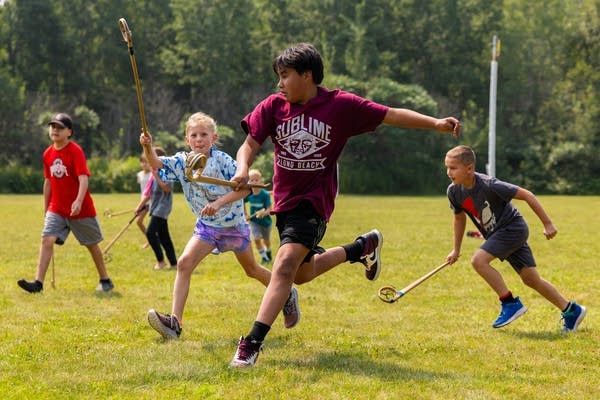
For the past eight years, Howes and others on the Fond du Lac Reservation and other tribal communities have worked to revive the game of Baaga’adowewin, the Ojibwe version of lacrosse that once was a vital community-building tradition around the Great Lakes — but then virtually disappeared during the boarding school era.
Nine teams from Native communities around northern Wisconsin and the Twin Cities have come together for this tournament hosted by the Fond du Lac Language program.
Howes gathers dozens of children at the center of the field for a youth match to kick off the event. They fall silent as he speaks.
"I really love you all for what you're doing: for yourselves, for your communities and for showing up here today,” Howes tells them. “This is really something beautiful. This is a dream that we had, that this would happen again."
A player throws the ball high into the air, and the kids are off, a whir of motion. Eleven-year-old Isaac Buffalo grabs the ball with his stick, cradles it as he weaves through players, and scores by smacking the ball against the pole.
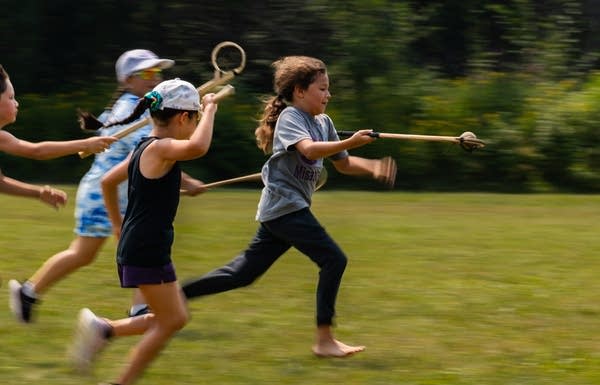
Buffalo, from the Red Cliff Band of Lake Superior Chippewa in northern Wisconsin, has played the game since he was 3 years old.
“It’s awesome, I just love doing this, and I like seeing how we get all these people here playing Native lacrosse,” he said.
Even for the young people playing here, Baaga’adowewin is more than simply a fun activity.
“It’s a healing game, a medicine game,” explained Eva Neveaux, 17, from the Bad River Band of Lake Superior Chippewa, also in northern Wisconsin.
Neveaux has played for three years, since she was introduced to it during lunchtime games in middle school. Now that Baaga’adowewin has returned, Neveaux said it’s important for youth to keep it going.
“When we play and you hear those sticks clacking, it's like the medicine going around. You're playing for your ancestors and the spirits.”
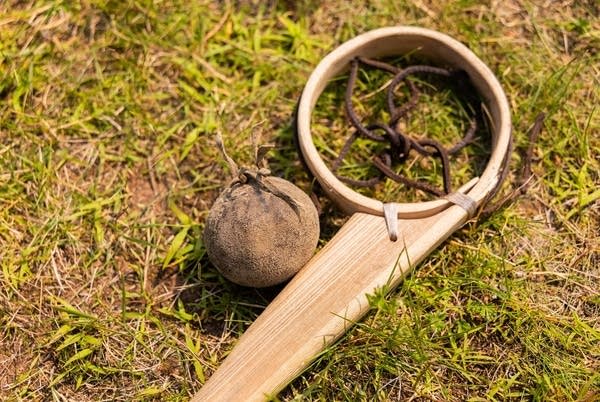
‘It’s a ceremony’
Modern lacrosse is modeled after a game played by Native nations in the northeastern U.S., who played with sticks with larger baskets. Southeastern tribes played a similar game with two sticks. People in the Great Lakes region use a stick with a smaller, round basket. But growing up, Howes didn’t even know it existed.
Eight years ago, a group called Twin Cities Native Lacrosse played a demonstration game of Baaga’adowewin on the Fond du Lac Reservation. That was the first time Howes ever saw it played.
Immediately after that game, Howes knew he wanted to bring Baaga’adowewin back to his community, for physical and mental health, and for spiritual well-being.
"It's more than a game. It's a ceremony,” Howes said. "All I know is that this feels right to my heart, to my spirit. And I know when I play, I smile. I forget things that are bothering me.”
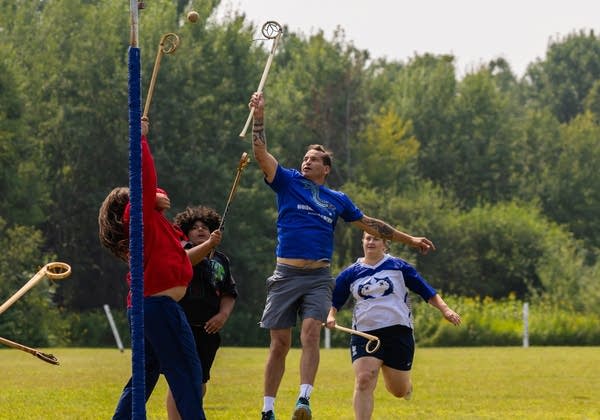
Howes felt this could be the part he played in a broader effort among Ojibwe communities to reclaim and revitalize their language and culture. Historically, every time different communities gathered together, he said, they would play Baaga’adowewin.
“We've lost a lot of things, but there are things out there along the way, along our path, and we just have to sometimes pick them up. And this, I feel like, is one of those things."
But he faced one major hurdle: They needed sticks to play. So Howes learned to make them. He already made cradleboards for safely carrying infants by using steam to bend wood from ash trees.
So, through trial and error, he learned to fashion Baaga’adowewin sticks in his garage workshop. Starting with four foot lengths of ash, he carefully bends the end of each stick into a small circle that holds the leather basket where the ball is cradled.
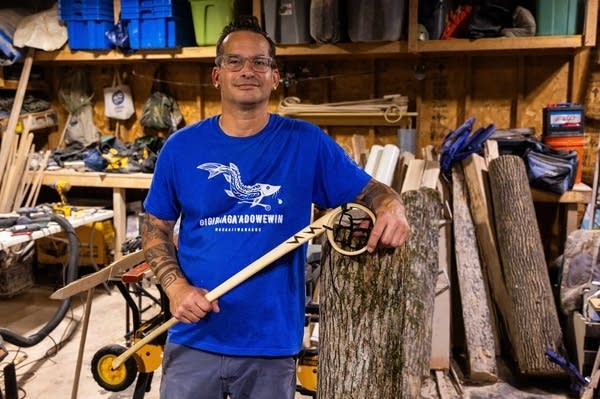
He’s since made hundreds of sticks — more than he can count — that are used throughout his community and beyond. His wife, brother and others hand-stitch the balls.
Through weekly community games, the game’s popularity has ignited. Meanwhile, it’s also sprouted in other Ojibwe communities.
Joseph Gokee brought two teams to the tournament from the Bad River Band of Lake Superior Chippewa, where he helped bring back the game nearly a decade ago. Twice a week he organizes a game for school children over lunch.
“We try to do that so that all these kids feel seen, they feel valued, they have a place to be themselves,” said Gokee. “Lacrosse is something they look forward to.”
Community leaders from Bad River say the game’s revival has improved mental health and graduation rates among young people.
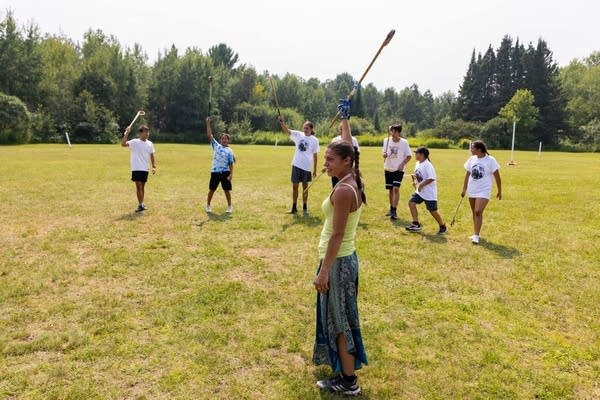
Devin Deverney, 23, drove three hours with a team from the Lac du Flambeau Band of Lake Superior Chippewa to participate in the tournament. He said the game is helping to bring far-flung Ojibwe bands together.
“We want it to bring goodness. We want it to bring people together all the time. That's the whole goal. Things that weren't there when I was growing up, are now here. It’s so special.”
‘Something that will never go away’
There are few set rules in a game of Baaga’adowewin. Any number of people can play. There are no boundaries on the field. Players need to throw or touch the ball against a goal post to score.
Before each game, players group together in a circle at the center of the field.
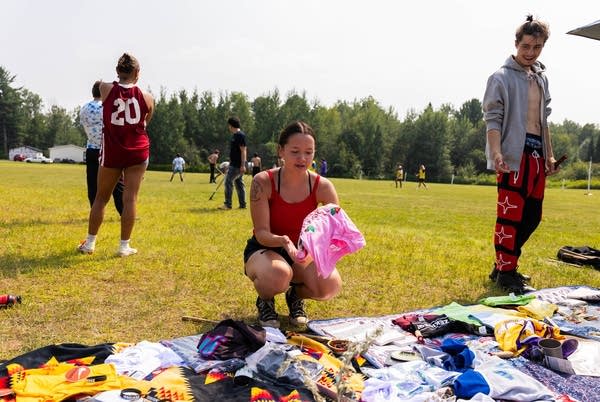
"The beginning is important,” explained Howes. “That's some of that ceremony. We believe that you put a thought or hope in your heart. We all hold our sticks up, and that's to get the universe's, the Spirit's, attention.”
Then on the count of four, the players let out a war cry to “send that hope or prayer out,” said Howes. “And then we make sure that those spirits hear it.”
The countdown in the Ojibwe language is also significant.
“The first one is for the kids,” said Deverney. “The second one's for the elders. Third one's for the sick people and the ones that can't play. And then the last one is for us. It's the medicine game that brings us all together.”
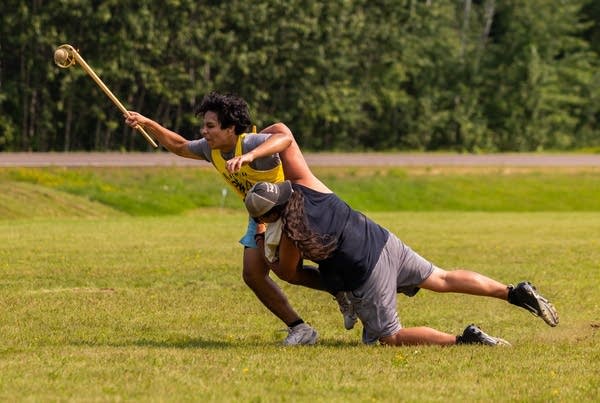
The game can be physical. Players throw shoulders into one another. Some get knocked over, hard, to the ground. They don’t wear pads like in modern lacrosse.
"But that's the whole thing is you're supposed to give it your all,” explained Howes. “It’s respectful. Because that means you really mean that prayer that you sent out.”
Players who score leave the game to select one of many gifts that are spread on a blanket on the side of the field. When another player wins a gift, it completes the prayer of the person who brought it, Howes said.
At the end of each game, players gather again at the center of the field. They hold their sticks up high, together, in a tight circle.
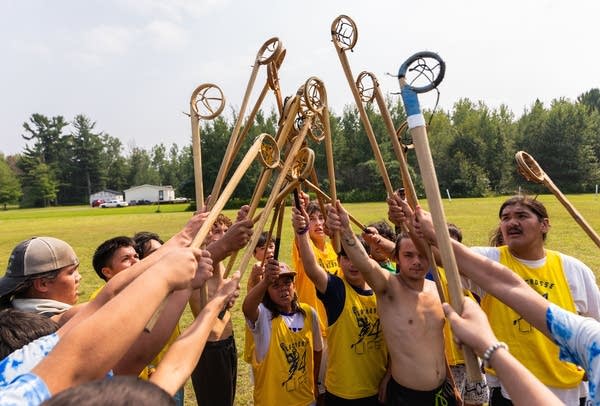
"No hard feelings leave this field!” Howes told them after a game. “This is where we let them go, right here!” The players let out another cry, knocking their sticks together.
Later, he looked out at the field with joy, his dream of seeing Baaga’adowewin return fulfilled.
"It's something that will never go away again,” Howes said. “We lost this because of boarding schools and assimilation in this country and suppression of anything that was Indigenous.”
Now, he said, young people grow up knowing that this game originated in their community. “It comes from our people. And that's really empowering to them.”
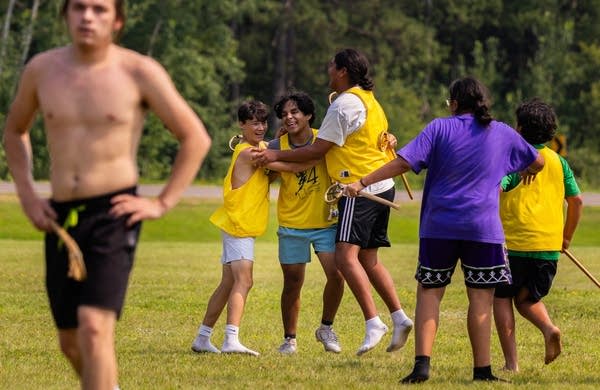






 English (US) ·
English (US) ·